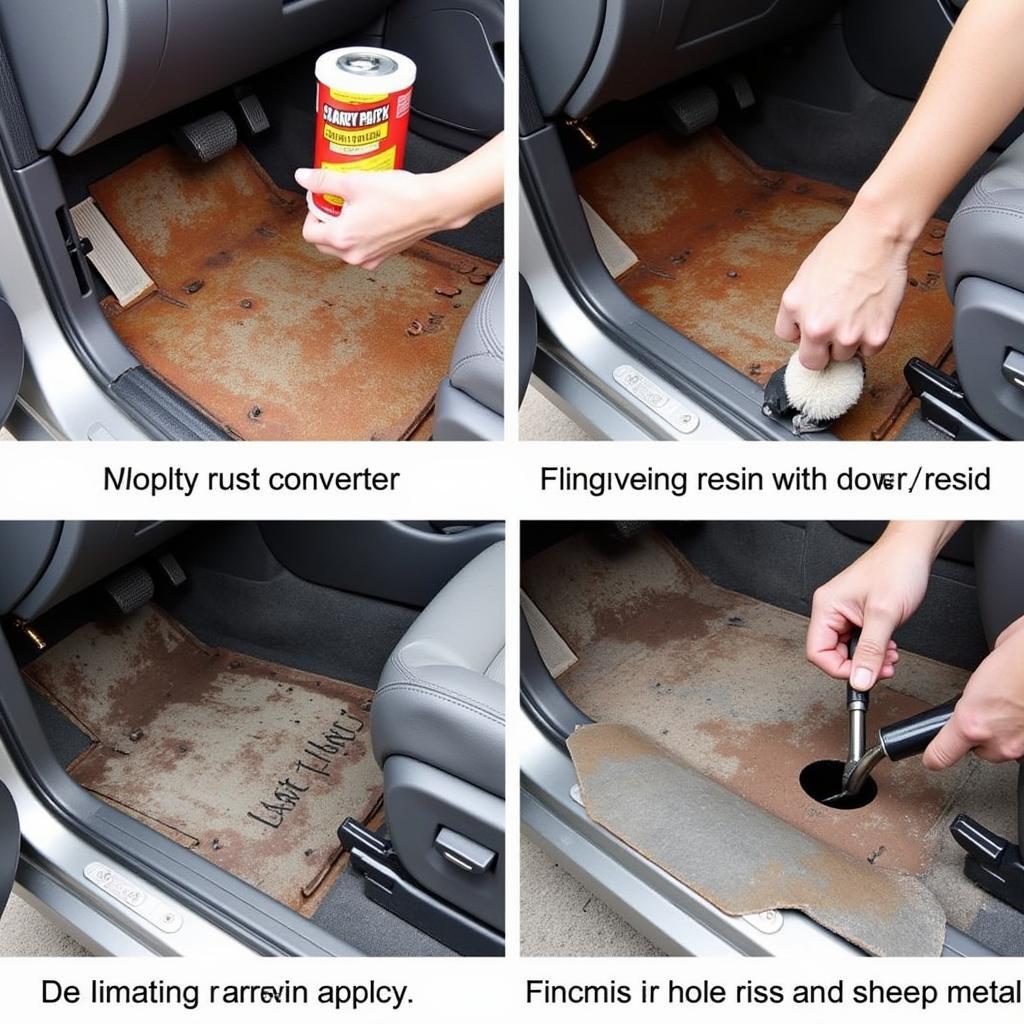Dealing with rat-chewed wires in your car can be a frustrating and potentially dangerous problem. If you’ve discovered this unwelcome surprise, this guide will walk you through How To Fix Rat Chewed Wires In Car and prevent future rodent infestations.
Identifying and Assessing the Damage
The first step in tackling this issue is to pinpoint the extent of the damage. Carefully inspect the wiring throughout your engine compartment, looking for any signs of chewing, gnawing, or exposed wires. Rats often target wires near the engine block, battery, and within the wiring harnesses. Look for droppings, nests, or other signs of rodent activity.
Once you’ve located the chewed wires, assess the severity. Is the damage limited to the insulation, or are the wires themselves severed? Minor damage might be repairable with electrical tape and protective sleeving, while more extensive damage will likely require splicing or replacing entire sections of the wiring harness.
Gathering Your Tools and Materials
Before you start the repair process, gather the necessary tools and materials. This typically includes:
- Electrical tape
- Heat shrink tubing
- Wire strippers/cutters
- Soldering iron and solder (for splicing wires)
- Replacement wiring or wiring harness (if necessary)
- Protective rodent repellent spray
- Gloves
- Flashlight
Having everything on hand will make the repair process smoother and more efficient.
Repairing the Damaged Wires
Minor damage to the wire insulation can often be repaired with electrical tape. Wrap the damaged area tightly with high-quality electrical tape, ensuring complete coverage. For added protection, consider applying heat shrink tubing over the taped area. The heat shrink tubing will provide a more durable and weather-resistant seal.
If the wires are severed, you’ll need to splice them back together. This involves stripping the insulation from both ends of the severed wire, twisting the exposed copper wires together, and soldering them for a secure connection. Cover the soldered connection with heat shrink tubing. For more significant damage to the wiring harness, it’s often best to replace the entire affected section or consult a qualified mechanic. How much to fix wheel bearings in a car? This depends on the damage and can vary.
Preventing Future Rodent Damage
After repairing the damaged wires, it’s crucial to take steps to prevent future rodent infestations. This can include:
- Cleaning your car’s engine compartment regularly to remove food debris and nesting materials.
- Using rodent repellent sprays or ultrasonic devices in and around your car.
- Parking your car in a garage or covered area whenever possible.
- Sealing any potential entry points into your car’s engine compartment.
Conclusion
Dealing with rat-chewed wires in your car can be a hassle, but with the right approach, you can effectively repair the damage and prevent future infestations. Remember to thoroughly inspect your wiring, use the appropriate repair techniques, and implement preventive measures to keep those pesky rodents away. If you’re uncomfortable working on your car’s electrical system, don’t hesitate to contact a qualified mechanic for assistance. Feel free to connect with us at AutoTipPro for further assistance. You can reach us at +1 (641) 206-8880 or visit our office at 500 N St Mary’s St, San Antonio, TX 78205, United States. We’re here to help!







Leave a Reply